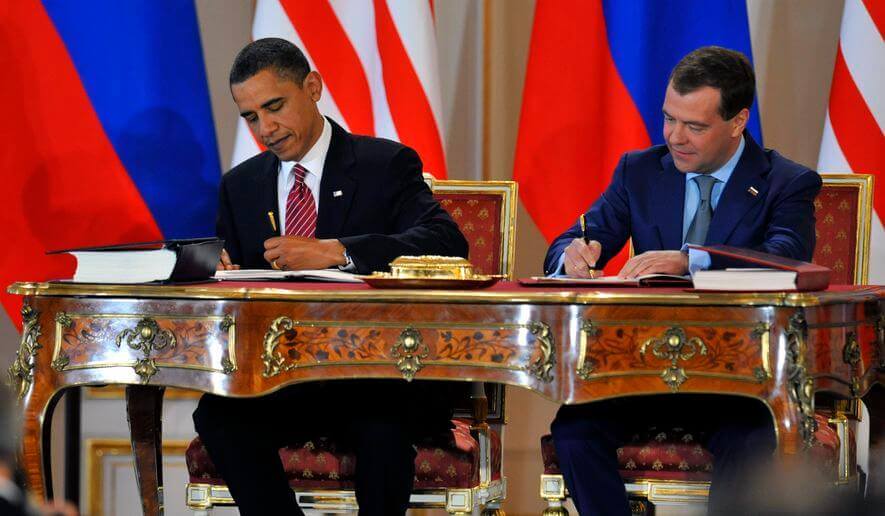On Monday, negotiators from the United States (US) and Russia met in Helsinki for a fresh round of talks on nuclear arms control. The meeting came as the Measures for the Further Reduction and Limitation of Strategic Offensive Arms treaty— or the New START treaty—a crucial bilateral nuclear weapons pact, which was signed between the two sides in 2010, is set to expire in February 2021.
The meeting was led by US Special Presidential Envoy for Arms Control Marshall Billingslea and Russia’s Deputy Foreign Minister Sergei Ryabkov, who discussed the future of the New START agreement, which currently places limits for the reduction of strategic nuclear arms. Under the agreed-upon terms, within seven years of the treaty being signed, both countries had to reduce their strategic offensive arms in a manner that their overall amounts should not have exceeded 700 intercontinental and submarine-launched ballistic missiles and heavy bombers, 800 strategic bombers and missile launchers, and 1,550 warheads.
However, according to the Stockholm International Peace Research Institute (SIPRI), Moscow and Washington jointly own 90% of the world’s nuclear weapons. The arms control watchdog has estimated that at the beginning of the year, the US had 5,800 warheads and Russia had roughly 6,375.
The Russian foreign ministry reportedly said that the two parties “exchanged views on the current state and further prospects for bilateral cooperation in the area of arms control,” without providing further details about what they discussed. So far, Washington has signalled that it wishes for new and renewed nuclear treaties to cover all kinds of warheads and include stronger transparency and verification measures. It has also said that it wishes to bring China on board for a nuclear arms agreement, a proposal that Beijing has declined. On the other hand, the Kremlin is keen to extend the New START without any preconditions, warning that there is no time to renegotiate a new deal with complicated mechanisms and calling the American bid “unrealistic”.
Yesterday’s talks come as a new round of negotiations following a meeting of the two sides in Vienna over the summer, which failed to provide a breakthrough for an extension with mutual consent. The Finnish capital has also often served as a neutral venue for discussions between the US and Russia. It hosted both sides for similar discussions back in 2017 and was also the location for US President Donald Trump and Russian President Vladimir Putin’s 2018 summit. “In the current world situation, all dialogue is important, and I welcome its continuation between the United States and Russia,” Finnish President Sauli Niinisto said ahead of the discussions. Niinisto also held separate private meetings with Billingslea and Ryabkov after their deliberations.
Russian Foreign Minister Sergey Lavrov on Monday expressed his concern that the inability of the US’ proposed conditions to take into account Russian interests may lead to a deadlock and the end of the “golden standard” agreement. “Unfortunately, this trend is holding rather firm. [The US] quit UNESCO, the UN Human Rights Council and withdrew from almost all treaties. [New START] is the last strategic offensive arms agreement that will die now because the conditions [the US] put forward are completely unilateral and take into account neither our interests nor experience of many decades when arms control was carried out to universal satisfaction and was welcomed by all countries in the world,” he said.

